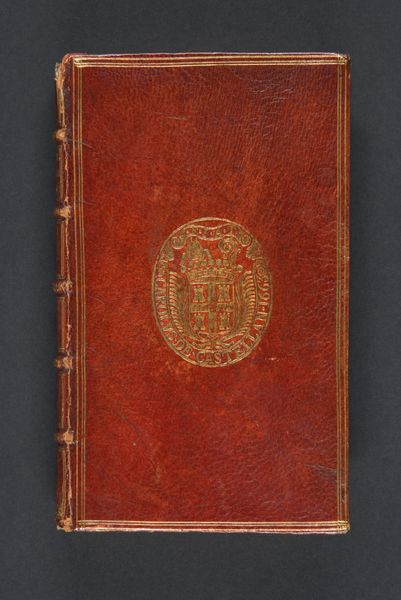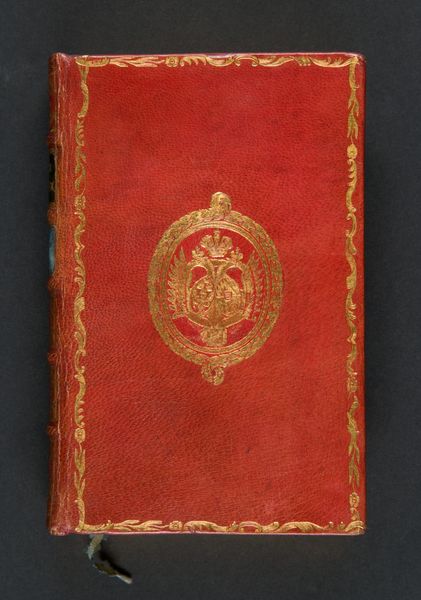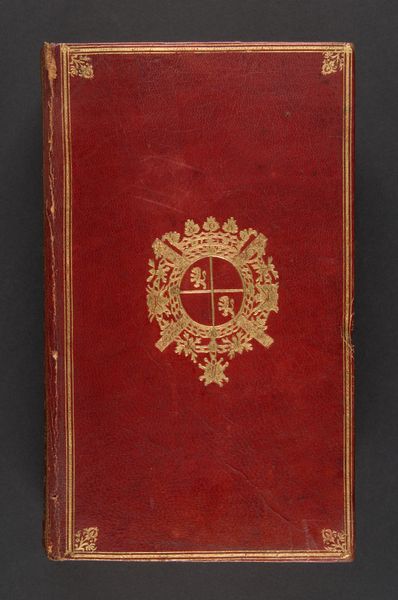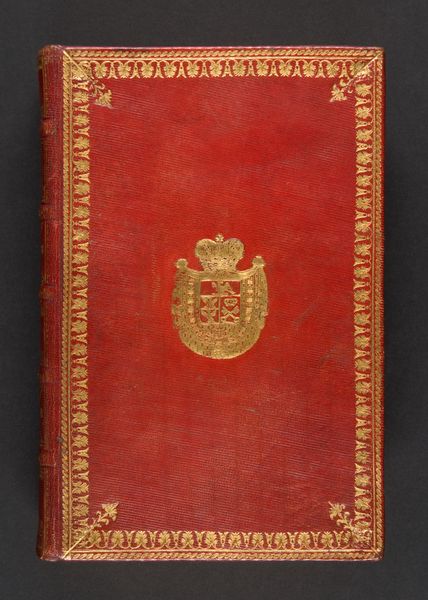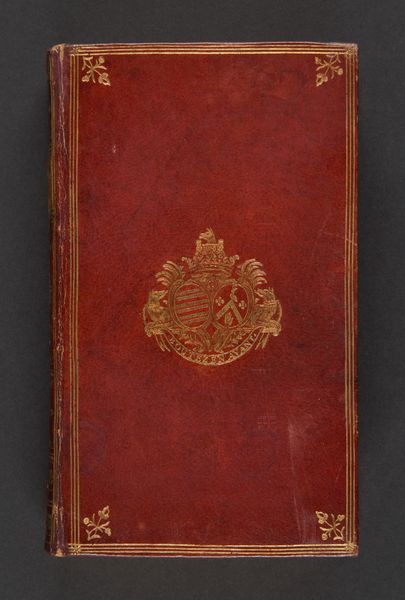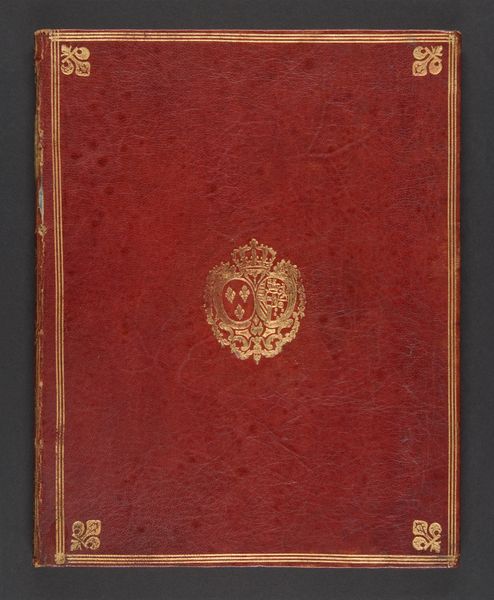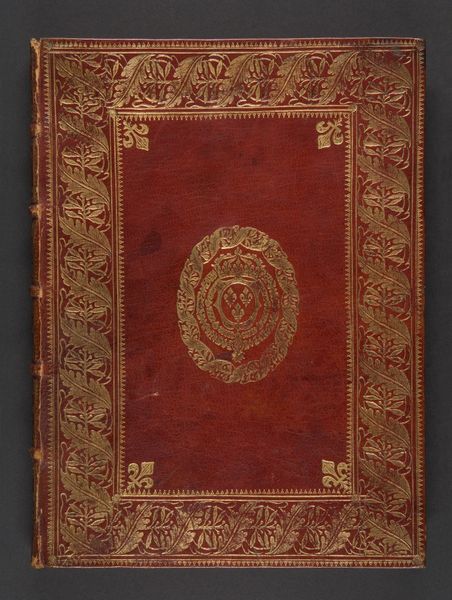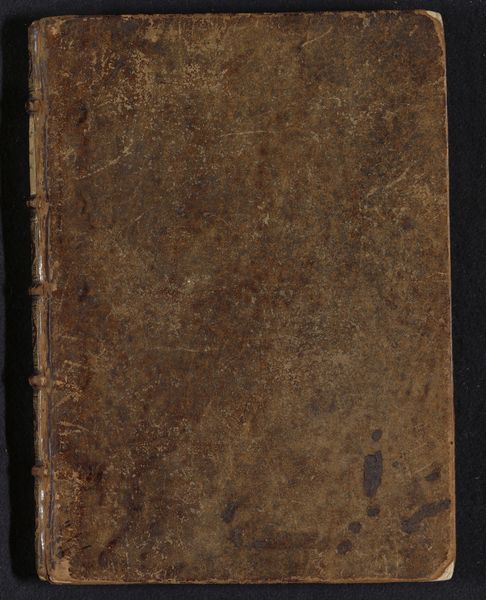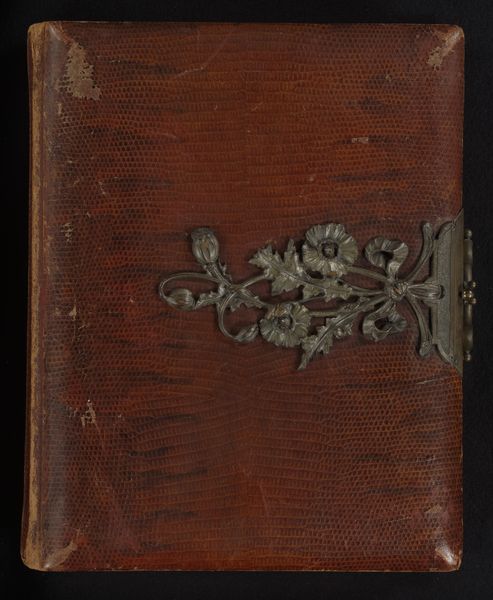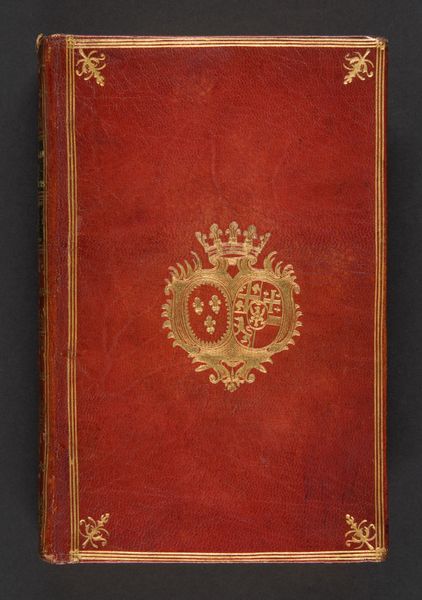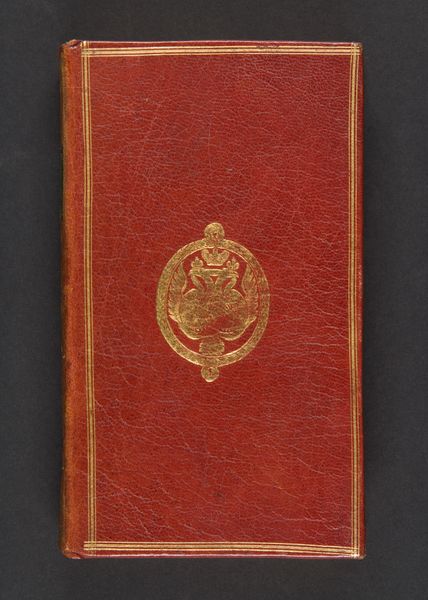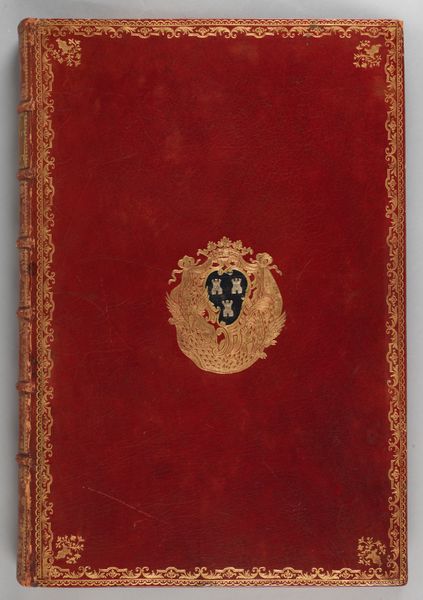
Histoire secrette de Neron, ov, Le festin de Trimalcion, traduit de Petrone, avec des notes historiques par M. Lavaur ... 1726
0:00
0:00
guilding, embossing
#
book
#
guilding
#
embossing
#
embossed
#
history-painting
#
embossing
Dimensions: 2 volumes bound in 1 (2 pages, leaf, lxxij, 192 pages; 1 leaf, 193-447, 3 pages), Height: 6 5/16 in. (16 cm)
Copyright: Public Domain
Editor: Here we have the "Histoire secrette de Neron…," or “The Secret History of Nero,” published in 1726, and translated by M. Lavaur. It looks like it’s bound in red leather with gold guilding. The cover has a very ornate embossed design in the center. It feels like it's trying to convey a sense of power and history. What strikes you about this book? Curator: For me, the immediate pull is how this object, seemingly a simple book, becomes a site of cultural and political commentary. This wasn't merely a historical text; it was intervention. The timing is crucial. Think about what criticisms of power might have been circulating in the 18th century when this book was published, particularly in the context of European monarchies. Consider the implications of revisiting Nero's history during a period defined by its own power struggles and decadent courts. It subtly invites comparisons, doesn't it? Editor: So you're suggesting it's more than just a historical account; it's a critique disguised as history? Curator: Precisely. And notice the "secret" in the title. What secrets do you think this book promises to reveal? And who benefits from those secrets being revealed or concealed? Think about who this book might have been targeting – the educated elite, perhaps? And how does that target audience shape its message? It is a great way to stir controversy. Editor: That makes you wonder about the role of translators and publishers like Lavaur at that time, not just as disseminators of text, but as active participants in shaping historical narratives. Curator: Absolutely! Their choices – what to translate, how to annotate, and even how to bind and present the book – become acts of interpretation and advocacy. It shows how objects and words become acts of resistance. Editor: I never thought of bookbinding as an act of political speech. Curator: This one asks us to read its silence. Books can carry hidden cultural contexts and biases, and seeing it through that lens opens up many new avenues of analysis.
Comments
No comments
Be the first to comment and join the conversation on the ultimate creative platform.
